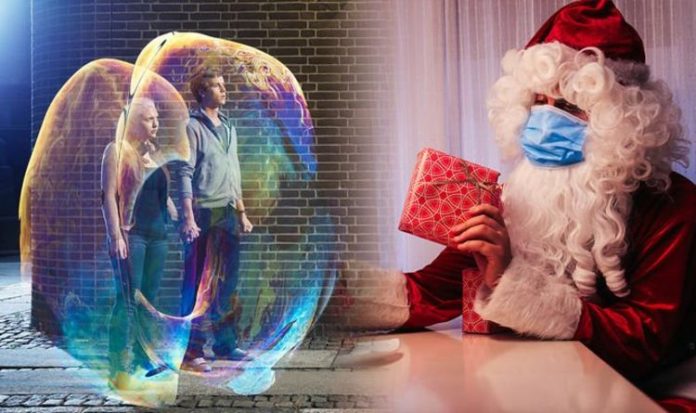Christmas coronavirus rules have been unveiled and now people can arrange plans for their upcoming festive season. Britons will be permitted to celebrate in three-household “Christmas bubbles” with their families from December 23 to 27. But does a support bubble count as one household?
A joint statement issued by the UK Government and Devolved Administrations revealed the festive plans for the upcoming Christmas period.
The statement reads: “This cannot be a ‘normal’ Christmas. But as we approach the festive period, we have been working closely together to find a way for family and friends to see each other, even if it is for a short time, and recognising that it must be both limited and cautious.
“Even where it is within the rules, meeting with friends and family over Christmas will be a personal judgement for individuals to take, mindful of the risks to themselves and others, particularly those who are vulnerable.
“We need everyone to think carefully about what they do during this period, balancing some increased social contact with the need to keep the risk of increased transmission of the virus as low as possible. “This is particularly important when considering those who are vulnerable, and before deciding to come together over the festive period we urge the consideration of alternative approaches such as the use of technology or meeting outside.”
READ MORE: Christmas: Three households can mix and care home rules relaxed
Many people have expressed confusion about how the “Christmas bubble” works in conjunction with “support bubbles”.
The rules about what counts as a household depend on where in the UK you live.
In England, if you have formed a support bubble with another household, this counts as one household.
This means on top of your support bubble, you are able to join with two other households for your Christmas bubble.
This means technically if three support bubbles join together for a Christmas bubble, six households would be able to meet.
The Government website reads: “Existing support bubbles count as one household towards the three household limit.
“This means that if you are in a support bubble, you can collectively form a Christmas bubble with two other households.
“This applies only to support bubbles as set out in law.
“You should, however, consider the risks of doing so and keep your Christmas bubble as small as possible.”
READ MORE: Coronavirus warning: Sage expert’s concern of Christmas Covid bubbles
What are the other rules related to Christmas bubbles?
Anyone experiencing symptoms or who is self-isolating should not form a Christmas bubble.
If someone tests positive or develops COVID-19 symptoms up to 48 hours after the Christmas bubble last met, everyone must self-isolate.
In addition, in England people living in shared households can split and join separate Christmas bubbles without breaking the three-household rule.
In England, some care home residents may be allowed to form a bubble with one other household, in agreement with the home and subject to individual risk assessments.
Care home residents should not, however, form a three-household bubble at any point.
While bubbles are exclusive, children whose parents are separated are permitted to move between two Christmas bubbles so they can celebrate with both parents.







